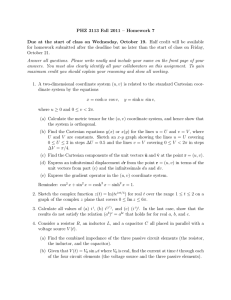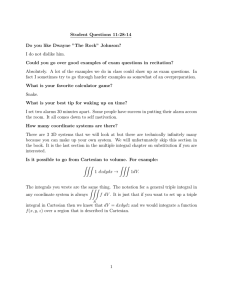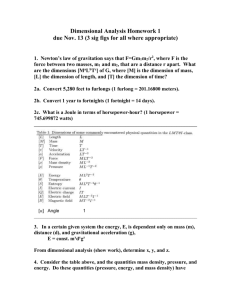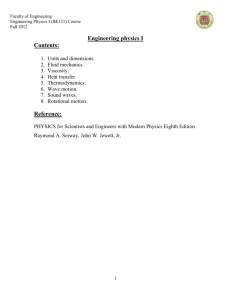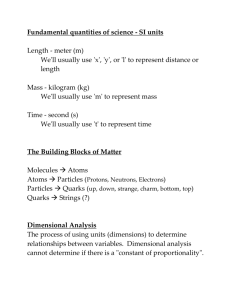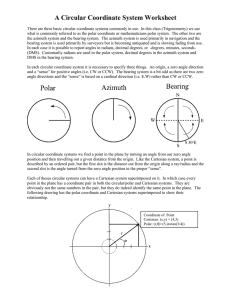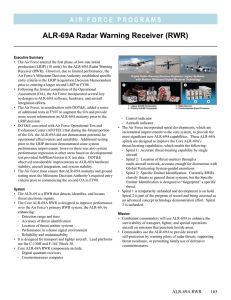Length: L, Time: T & Mass: M
advertisement
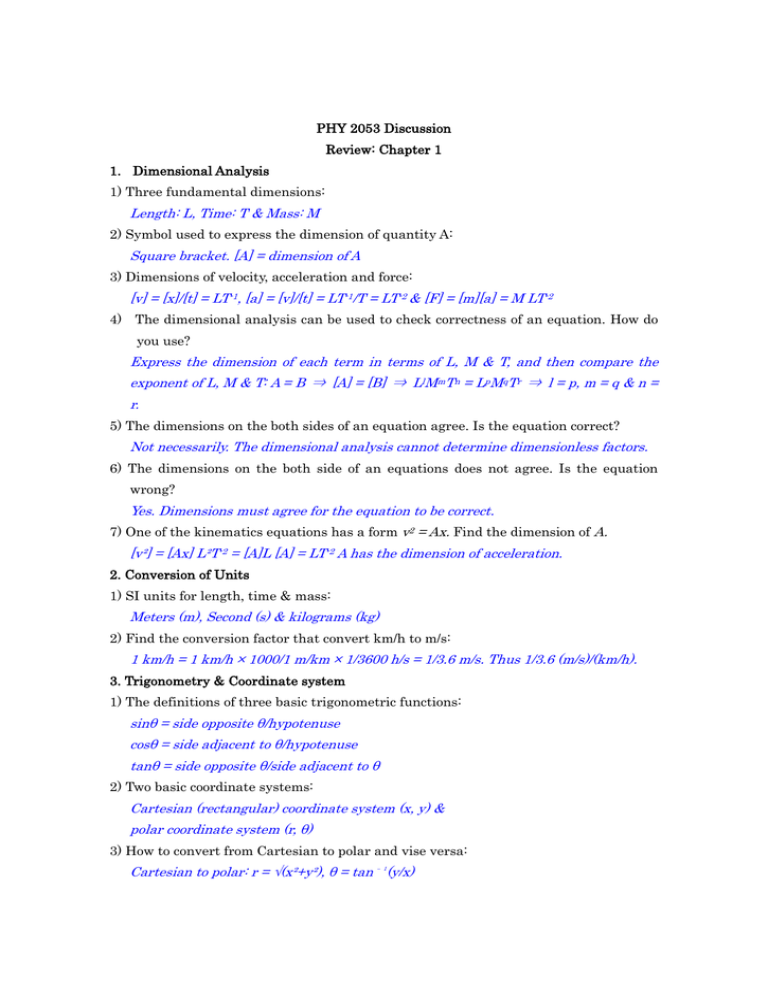
PHY 2053 Discussion Review: Chapter 1 1. Dimensional Analysis 1) Three fundamental dimensions: Length: L, Time: T & Mass: M 2) Symbol used to express the dimension of quantity A: Square bracket. [A] = dimension of A 3) Dimensions of velocity, acceleration and force: [v] = [x]/[t] = LT-1, [a] = [v]/[t] = LT-1/T = LT-2 & [F] = [m][a] = M LT-2 4) The dimensional analysis can be used to check correctness of an equation. How do you use? Express the dimension of each term in terms of L, M & T, and then compare the exponent of L, M & T: A = B ⇒ [A] = [B] ⇒ LlMmTn = LpMqTr ⇒ l = p, m = q & n = r. 5) The dimensions on the both sides of an equation agree. Is the equation correct? Not necessarily. The dimensional analysis cannot determine dimensionless factors. 6) The dimensions on the both side of an equations does not agree. Is the equation wrong? Yes. Dimensions must agree for the equation to be correct. 7) One of the kinematics equations has a form v2 = Ax. Find the dimension of A. [v²] = [Ax] L²T-2 = [A]L [A] = LT-2 A has the dimension of acceleration. 2. Conversion of Units 1) SI units for length, time & mass: Meters (m), Second (s) & kilograms (kg) 2) Find the conversion factor that convert km/h to m/s: 1 km/h = 1 km/h × 1000/1 m/km × 1/3600 h/s = 1/3.6 m/s. Thus 1/3.6 (m/s)/(km/h). 3. Trigonometry & Coordinate system 1) The definitions of three basic trigonometric functions: sinθ = side opposite θ/hypotenuse cosθ = side adjacent to θ/hypotenuse tanθ = side opposite θ/side adjacent to θ 2) Two basic coordinate systems: Cartesian (rectangular) coordinate system (x, y) & polar coordinate system (r, θ) 3) How to convert from Cartesian to polar and vise versa: Cartesian to polar: r = √(x²+y²), θ = tan⁻¹(y/x) Polar to Cartesian: x = rcosθ, y = rsinθ

